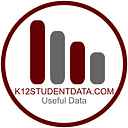2 min readFeb 22, 2016
I made the mistake of thinking that all assessment data had value and used it for the wrong reasons. I didn’t understand the quality of the test or activity was more important than the resulting data.
15 things I have learned about assessment data
- Assessment of quality is the most important part of data drive decisions. Weak tests, no matter the intention, give you bad data.
- Spend first on creating quality assessments, not on cool technology.
- District assessments can be shorter than you think and still provide good data. They just have to be of high quality.
- Dashboards are not as useful to teachers as I used to think. I like a good visual, but cool does not matter if the test was weak. Kindergarten teachers don’t need dashboards. It annoys them.
- State test data is for student groups and trends. Using it to judge a teacher is wrong. This data is more about parents, school programs, and environment than individual teachers.
- Focus district assessment creation on big picture decisions, not the classroom. District assessments designed to help the instructional decisions try to do too many things.
- Predictive assessments are not wrong, as long as they don’t use significant time. They give school sites and teachers perspective and ideas for making adjustments.
- Predictive assessments used for state test planning narrow curriculum.
- Diagnostic assessments are not a waste of time. They help teams and departments to plan for instruction and reaching goals should use them.
- District programs benefit from different data types than the classroom. It is the reason classroom teachers don’t always understand the thinking behind their district assessments.
- Classroom assessments produce better information for the teacher than for district tests. It is necessary to build assessment creation skills with your teachers.
- Individual faculty and students' expertise offer more worth than one test result.
- Curriculum effects performance data. High-quality curriculum and materials help everyone involved in the learning process.
- Short-term changes don’t always equal success in the long run. Cutting corners to get higher scores hurts over time for stakeholders.
- District and site goals should be similar. Team and classroom goals can differ greatly from site and district goals.
